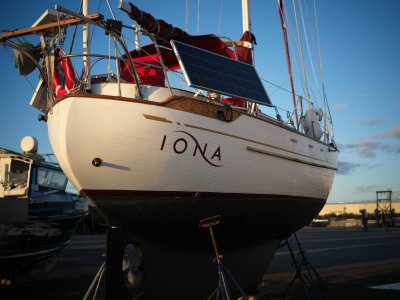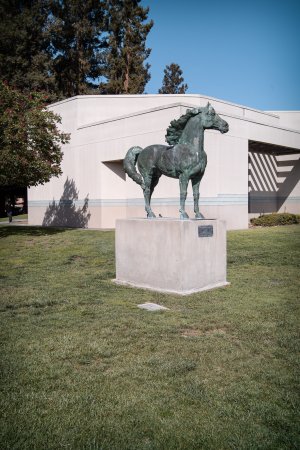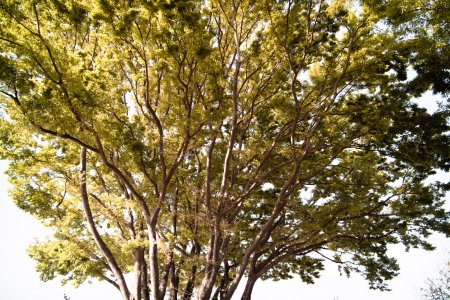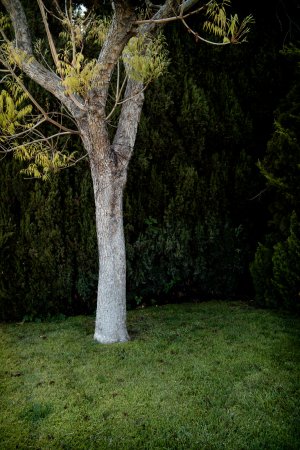Whitten
Established
All the white-ish areas in Boojum's images show a heavy blue cast. It's not THAT subjective, it just looks like the wrong white balance selected.I did that with one image and to my eyes it was 'better' although better is rather subjective.
If Pixii is shifting the sensor and integrating each site to get red-green-blue values for each pixel, then it should be a good monochrome image.
If the monochrome image is being interpolated from a single collection at each pixel, as is usually the case- then it is a monochrome interpolation that introduce artifacts. The real test is to use a Red filter over the lens when taking the image. If the Pixii is doing a shift and add algorithm, it will produce the same image as a monochrome camera using the red filter. An R60 filter cuts into the portion of the spectrum recorded by the Red pixels in a typical sensor.
If the monochrome image is being interpolated from a single collection at each pixel, as is usually the case- then it is a monochrome interpolation that introduce artifacts. The real test is to use a Red filter over the lens when taking the image. If the Pixii is doing a shift and add algorithm, it will produce the same image as a monochrome camera using the red filter. An R60 filter cuts into the portion of the spectrum recorded by the Red pixels in a typical sensor.
boojum
Mentor
Some of the images show a heavy blue cast. And you are correct, that was from when I had the white balance set wrong. I think that a glance at this album will show photos without a heavy blue cast, but I may be wrong. Anyway, take a peek and see what you think. Pixii ThanksAll the white-ish areas in Boojum's images show a heavy blue cast. It's not THAT subjective, it just looks like the wrong white balance selected.
ranger9
Well-known
Here's a link to what Pixii says they are doing: Monochrome mode. They aren't shifting the sensor because there's no way to shift it; it's rigidly attached to the camera. (There's also no IBIS and no "ultrasonic" dust removal.)If Pixii is shifting the sensor and integrating each site to get red-green-blue values for each pixel, then it should be a good monochrome image.
If the monochrome image is being interpolated from a single collection at each pixel, as is usually the case- then it is a monochrome interpolation that introduce artifacts.
Short summary of their longer explanation from their blog: In any Bayer-array color digital image, only the luminance (amount of light) value of each sensor pixel is an actual measurement. The color values are a computation: one color value is computed based on the characteristics of the filter over that sensor pixel, and the other two are estimated based on nearby pixels.
Because Pixii knows exactly how the color values are computed, and knows the exact characteristics of the filter array over the sensor, they can reverse the computation process to factor out the chroma computations and reconstruct the original luminance measurement. The only thing that gets lost is the light that's absorbed by the color filter and doesn't have a chance to affect the sensor pixel in the first place; Pixii says this amounts to about 1 stop.
(So why doesn't everyone do it that way? For one thing, because Pixii has a patent application on file...)
FYI, Pixii's latest owner email includes a link to a post by a photo enthusiast named Jim Chung, who compared the Pixii's monochrome mode to a monochrome image produced by sensor-shifting (using an OM Systems OM-1) and to one produced by a true monochrome sensor, the Phase One IQ260 Achromatic.
boojum
Mentor
Yes, I read Chung's article. I have been convinced since the camera came out that it is a good camera. The B&W trick is one example. The color is very nice, too. And having lived in Francophone areas for five years or more I am aware that the French do not wear artist's smocks and berets, sport pencil thin mustaches and have woman who all walk poodles. They sport some sharp engineers as in the TGV, the Citroen line of cars - disclaimer, I own a 2CV - pasteurization, radial tires and more. We sometimes have that Anglo-Saxon way of thinking that the French do not know squat. This is not true. And to pull B&W quality out of a 26MP sensor that finishes a close second to a $40K+ 151MP sensor is some fine damned engineering. DxO still rates them very highly, better than Leica. I am just passing on the information, I did not generate it. Thank you.Here's a link to what Pixii says they are doing: Monochrome mode. They aren't shifting the sensor because there's no way to shift it; it's rigidly attached to the camera. (There's also no IBIS and no "ultrasonic" dust removal.)
Short summary of their longer explanation from their blog: In any Bayer-array color digital image, only the luminance (amount of light) value of each sensor pixel is an actual measurement. The color values are a computation: one color value is computed based on the characteristics of the filter over that sensor pixel, and the other two are estimated based on nearby pixels.
Because Pixii knows exactly how the color values are computed, and knows the exact characteristics of the filter array over the sensor, they can reverse the computation process to factor out the chroma computations and reconstruct the original luminance measurement. The only thing that gets lost is the light that's absorbed by the color filter and doesn't have a chance to affect the sensor pixel in the first place; Pixii says this amounts to about 1 stop.
(So why doesn't everyone do it that way? For one thing, because Pixii has a patent application on file...)
FYI, Pixii's latest owner email includes a link to a post by a photo enthusiast named Jim Chung, who compared the Pixii's monochrome mode to a monochrome image produced by sensor-shifting (using an OM Systems OM-1) and to one produced by a true monochrome sensor, the Phase One IQ260 Achromatic.
So they are interpolating a Monochrome image from the color values, equalizing based on the known filter factors. It loses something in the translation through the color dye of the Mosaic Filter. I wrote my own Fortran code to do that for the M9. I wrote my own demosaic scheme to equalize the values under the RGB Mosaic filter and then rewrote the image as Linear DNG. It works, but not as good as the M Monochrom. I made a point of pushing the color image as far as it would go. The M9 monochrome image had better highlight recovery. But- you still get problems when running into pathological scenes. Pathological- like taking a 1:1 picture of the Mosaic Filter shifted over one pixel so that no color sees itself. Red get Green, Blue gets Green, Green1 gets Red, and Green2 gets Blue. That would be an interesting test for the Pixii algorithm.Here's a link to what Pixii says they are doing: Monochrome mode. They aren't shifting the sensor because there's no way to shift it; it's rigidly attached to the camera. (There's also no IBIS and no "ultrasonic" dust removal.)
Short summary of their longer explanation from their blog: In any Bayer-array color digital image, only the luminance (amount of light) value of each sensor pixel is an actual measurement. The color values are a computation: one color value is computed based on the characteristics of the filter over that sensor pixel, and the other two are estimated based on nearby pixels.
Because Pixii knows exactly how the color values are computed, and knows the exact characteristics of the filter array over the sensor, they can reverse the computation process to factor out the chroma computations and reconstruct the original luminance measurement. The only thing that gets lost is the light that's absorbed by the color filter and doesn't have a chance to affect the sensor pixel in the first place; Pixii says this amounts to about 1 stop.
(So why doesn't everyone do it that way? For one thing, because Pixii has a patent application on file...)
FYI, Pixii's latest owner email includes a link to a post by a photo enthusiast named Jim Chung, who compared the Pixii's monochrome mode to a monochrome image produced by sensor-shifting (using an OM Systems OM-1) and to one produced by a true monochrome sensor, the Phase One IQ260 Achromatic.
Last edited:
boojum
Mentor
We are the proverbial blind men feeling the elephant. we know a bit about how Pixii does it, we think, from scuttlebut but I have not run across any definitive information. And we may not until Barth and Pixii SAS get their patent. The Chung article has some examples but that only hints it does not explain. Even if the camera were crap it sure has generated a lot of talk. And as always, I like mine and am eager to see the A2572 when it comes back home. David Barth is a smart man.
boojum
Mentor
OK, the A2572 came home tonight. A quick battery insert and shutter click proves it still takes pictures and still has the lovely soft Pixii palette. I noticed the colors a bit stronger in DNG as opposed to JPG but that could be the JPG profile and so on. I will try and test that in the coming days. All in all I am pleased and will tinker with it to see how it is working.
Godfrey
somewhat colored
OK, the A2572 came home tonight. A quick battery insert and shutter click proves it still takes pictures and still has the lovely soft Pixii palette. I noticed the colors a bit stronger in DNG as opposed to JPG but that could be the JPG profile and so on. I will try and test that in the coming days. All in all I am pleased and will tinker with it to see how it is working.
Great! I'm glad to hear they are progressing in the development of the Pixii. I look forward to seeing some examples of photos made with the new sensor.
G
boojum
Mentor
I got my A2572 back and out working. The color engine is still great. It also resolves very well. In rambling around the other day I got a photo of the Iona, a sweet boat-tailed sloop in dry dock here in Astoria, OR. I already had a similar photo of the same sloop with the X2D. Different lighting conditions and so on but posting here the X2D and the A2572 to show resolving power.
Whitten
Established
The top photo looks sharper with more contrast. I guess the nice light contributes a lot to that.
bob_summers
Member
Can’t wait to get my grubby hands on my Pixii. It was due already in mid March but an email arrived from David saying there’s around 10-15 days delay due to supply issues upstream. No problem for me, although on Friday we’re off on a 2 week trip down to the Mediterranean and back through Picos de Europa - would’ve been nice to break the new camera in on the trip.
So having watched literally every review video and read every article, all I can do is reacquaint myself with Darktable (last used it pre-pandemic with my scanned negs). Also have a love/hate relationship with my X100 - set to RAW, MF and OVF with tape over the screen, it’s kinda decent practice for the Pixii
So having watched literally every review video and read every article, all I can do is reacquaint myself with Darktable (last used it pre-pandemic with my scanned negs). Also have a love/hate relationship with my X100 - set to RAW, MF and OVF with tape over the screen, it’s kinda decent practice for the Pixii
boojum
Mentor
Yes, this is true, but the images were put up only as an example of resolving power. The X2D image is very good, yes. I will get out and do some side by sides of the two cameras just ti see how the resolving power compares in the same light. How the colors are resolved will be interesting.The top photo looks sharper with more contrast. I guess the nice light contributes a lot to that.
I really like my little A2572. In its A1571 life it had great color and resolving power and it does as an A2572. Jim Chung did a side-by-side mono comparison between the Pixii and the Phase One and the Pixii did very well, and the Pixii is a 26MP APSC while the Phase One is a 60MP medium format. That David Barth and his crew can get true DNG B&W off a Bayer sensor which is serious mojo, I understand, and currently awaiting patent. Once patented it could be licensed, to Phase One, Hasselblad, Leica among others. I am very happy with my Pixii and more so with the upgrade. It'll shoot nine anything before the buffer fills and it takes a like amount of seconds the write the images and clear the buffer.Can’t wait to get my grubby hands on my Pixii. It was due already in mid March but an email arrived from David saying there’s around 10-15 days delay due to supply issues upstream. No problem for me, although on Friday we’re off on a 2 week trip down to the Mediterranean and back through Picos de Europa - would’ve been nice to break the new camera in on the trip.
So having watched literally every review video and read every article, all I can do is reacquaint myself with Darktable (last used it pre-pandemic with my scanned negs). Also have a love/hate relationship with my X100 - set to RAW, MF and OVF with tape over the screen, it’s kinda decent practice for the Pixii
I think that Pixii is pointing the way into the future with cameras and the technology. Unfortunately they seem under-recognized and underappreciated. I hope to see a bunch of photos from your Pixii real soon.
Last edited:
bob_summers
Member
thanks @boojum
The mono raw was the main draw for me, along with being a simple machine with no screen or video and few buttons, able to use my M glass, albeit with the crop. I'm coming from almost exclusively shooting film, something like 9 rolls of HP5+ to 1 roll of Portra, so to have that same capability of occasionally shooting colour (and without the stress of the chem expiring unused in my cupboard!) is useful. Let's be honest, money no object, and there'd be a certain Leica model in my rotation, but the Pixii ticks most of the boxes. The much-discussed supposed drawbacks, like the buffer fill or VF blockage with big lenses, don't really affect the way I shoot. My main worry is how I'll get on with the crop, as I now find myself without an effective 35mm lens, my preferred length, as my fast 35 is now a 50. Not sure how much of a problem that will be. When I'm walking around with a camera, I "see" 35mm framelines. Maybe I can recalibrate to see 50mm
The mono raw was the main draw for me, along with being a simple machine with no screen or video and few buttons, able to use my M glass, albeit with the crop. I'm coming from almost exclusively shooting film, something like 9 rolls of HP5+ to 1 roll of Portra, so to have that same capability of occasionally shooting colour (and without the stress of the chem expiring unused in my cupboard!) is useful. Let's be honest, money no object, and there'd be a certain Leica model in my rotation, but the Pixii ticks most of the boxes. The much-discussed supposed drawbacks, like the buffer fill or VF blockage with big lenses, don't really affect the way I shoot. My main worry is how I'll get on with the crop, as I now find myself without an effective 35mm lens, my preferred length, as my fast 35 is now a 50. Not sure how much of a problem that will be. When I'm walking around with a camera, I "see" 35mm framelines. Maybe I can recalibrate to see 50mm
Godfrey
somewhat colored
Bob,
I'd recommend adding a Color-Skopar 21mm f/3.5 to your kit. The resulting FoV is just a hair wider than 35mm on FF format (eqFOV about 31-32mm). I use this lens on the Leica CL (APS-C) and M10-M (FF) and it performs beautifully on both. I tested it on the Pixii as well when I had that to evaluate ... (note that I tend to add some vignette to my rendered images...)
The technically correct equivalent for a 35mm on APS-C is 24mm, but I've found over the years that I had APS-C cameras that 21mm is a very sweet FoV on the format.
G
I'd recommend adding a Color-Skopar 21mm f/3.5 to your kit. The resulting FoV is just a hair wider than 35mm on FF format (eqFOV about 31-32mm). I use this lens on the Leica CL (APS-C) and M10-M (FF) and it performs beautifully on both. I tested it on the Pixii as well when I had that to evaluate ... (note that I tend to add some vignette to my rendered images...)
The technically correct equivalent for a 35mm on APS-C is 24mm, but I've found over the years that I had APS-C cameras that 21mm is a very sweet FoV on the format.
35mm Eq Angle of View for Pixii (APS-C)
f Hor Vert Diag
24 73.7 53.1 84.1 FF
28 65.5 46.4 75.4 FF
21 58.9 41.0 68.2 APS-C
35 54.4 37.8 63.4 FF
24 52.6 36.2 61.3 APS-C
G
Attachments
Last edited:
boojum
Mentor
You are not going to get an exact correspondence to FF lenses. A 28mm will get you an effective 42mm, a 21 and effective 32.5 and a 35 and effective 52.5. Close counts, no one will be cross checking other than yourself. A 28, 35 and 50 work well for me. I have a CV 40 but it is big and blocks part of the RF. The 35 is popular in the Pixii user groups and I like my Canon 28mm, too. My 50's are nice, too. Play with them.thanks @boojum
The mono raw was the main draw for me, along with being a simple machine with no screen or video and few buttons, able to use my M glass, albeit with the crop. I'm coming from almost exclusively shooting film, something like 9 rolls of HP5+ to 1 roll of Portra, so to have that same capability of occasionally shooting colour (and without the stress of the chem expiring unused in my cupboard!) is useful. Let's be honest, money no object, and there'd be a certain Leica model in my rotation, but the Pixii ticks most of the boxes. The much-discussed supposed drawbacks, like the buffer fill or VF blockage with big lenses, don't really affect the way I shoot. My main worry is how I'll get on with the crop, as I now find myself without an effective 35mm lens, my preferred length, as my fast 35 is now a 50. Not sure how much of a problem that will be. When I'm walking around with a camera, I "see" 35mm framelines. Maybe I can recalibrate to see 50mm
Again, my experience is just getting the photo and not the equivalent field of view. Just grab the little puppy and go out and have some fun with it. If you have my luck you will be pleased with the results. I hope this is your experience.
Last edited:
bob_summers
Member
I'm probably overthinking it @boojum - one of the deciding factors in ordering a Pixii was the look of the sample raw files I downloaded from various places, both mono and colour. Nothing much else should matter.
Dumb question maybe, but if I were to spend that kind of money it would need to work on my film M as well as the Pixii. I understand the newer Color Skopar was optimised for digital to cure the CA issue. This doesn't preclude it from working on film, does it?
This was on my list way back when Ken Rockwell reviewed one - but I never got around to trying one.I'd recommend adding a Color-Skopar 21mm f/3.5 to your kit.
Dumb question maybe, but if I were to spend that kind of money it would need to work on my film M as well as the Pixii. I understand the newer Color Skopar was optimised for digital to cure the CA issue. This doesn't preclude it from working on film, does it?
Godfrey
somewhat colored
regdz Voigtländer Color-Skopar 21mm f/3.5 Aspherical for Leica M:
I had the previous series f/4 lens and found it was not a great performer on digital, although it worked 'okay' on film; I'd originally purchased it for my M4-2 body. The current f/3.5 series model of this lens works very well on both film (M4-2) and digital (either APS-C CL or FF M10-M/R). Here's mine fitted to the M10-M along with an accessory 21/25mm finder and the LH-11 lens hood:
I use the rather larger LH-11 hood on the FF bodies. On the APS-C body, a Heliopan E39 Wide hood works well and is much handier in size.
It's a very good lens. Mine is the "classic" style variant with the chrome trim ring, it's also available in the simpler black or chrome finish.
G
... This was on my list way back when Ken Rockwell reviewed one - but I never got around to trying one.
Dumb question maybe, but if I were to spend that kind of money it would need to work on my film M as well as the Pixii. I understand the newer Color Skopar was optimised for digital to cure the CA issue. This doesn't preclude it from working on film, does it?
I had the previous series f/4 lens and found it was not a great performer on digital, although it worked 'okay' on film; I'd originally purchased it for my M4-2 body. The current f/3.5 series model of this lens works very well on both film (M4-2) and digital (either APS-C CL or FF M10-M/R). Here's mine fitted to the M10-M along with an accessory 21/25mm finder and the LH-11 lens hood:
I use the rather larger LH-11 hood on the FF bodies. On the APS-C body, a Heliopan E39 Wide hood works well and is much handier in size.
Cannot make a single post with more than three embedded images on RFF... Grr.
It's a very good lens. Mine is the "classic" style variant with the chrome trim ring, it's also available in the simpler black or chrome finish.
G
bob_summers
Member
Whitten
Established
I had the Colar Skopar 21mm, I guess it must have been an older version because it was quite terrible. Lots of soft corners and aberrations.
To be honest it put me off Voigtlander completely. I recently bought the 40mm F2 and it's very soft in the corners, but otherwise it's a very nice lens with a character I'm enjoying.
To be honest it put me off Voigtlander completely. I recently bought the 40mm F2 and it's very soft in the corners, but otherwise it's a very nice lens with a character I'm enjoying.
Share:
-
This site uses cookies to help personalise content, tailor your experience and to keep you logged in if you register.
By continuing to use this site, you are consenting to our use of cookies.










